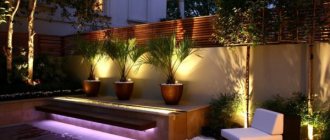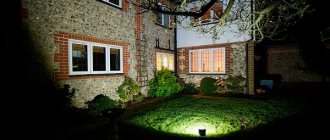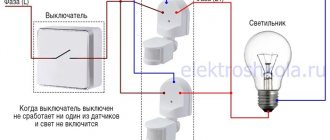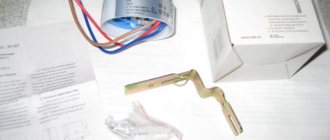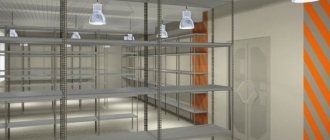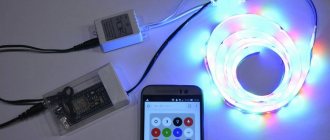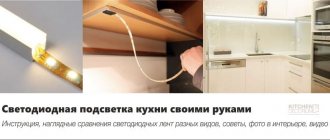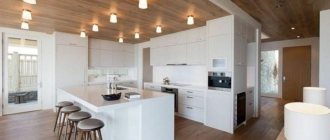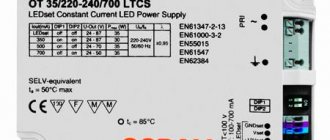Aquarium lighting is required when breeding fish from tropical or subtropical climates, where daylight hours are long throughout the year.
The microclimate is created using water heating and lighting systems. If with the heating of water everything is more or less clear and with the help of the air flows of the compressor it will mix and the heating will be more or less uniform, then with lighting everything is somewhat more complicated. Depending on what kind of fish and plants you keep, the necessary conditions will change.
Lamp spectrum selection
There is always a debate among aquariumists about the choice of spectrum. It is especially fueled by advertisements about the need to use the very, very best spectrum of a particular company.
As stated above, there is no spectrum that “helps” plants and “hurts” algae. If you have a fairly “good” spectrum, then intensity is more important to you than spectrum. If you have enough light, then the spectrum is not very important, and if you do not have light, then the spectrum will not help you. This is also evidenced by the successful cultivation of plants under the light of conventional lamps - LB (Coolwhite) or a combination of LB/LD (coolwhite/daylight) with electric lamps.
Selecting a manufacturer of LED elements
Aquarium lighting with LED lamps is becoming increasingly popular. Today, LED lighting is offered by several companies:
- Aqua Med.
- Aquael.
- Hagen.
- Juwel.
- Sera.
- Dennerle.
In addition to those officially existing, there is a huge list of companies from China where LED products can be purchased for a lower amount. In this case, you will have to check the quality yourself. But one thing is known for sure: the parameters of Chinese LEDs differ by an order of magnitude to a lesser extent. That is, if the luminosity of European and Japanese LEDs corresponds to the parameters, then the Chinese ones will shine weaker.
Purchase of components
| 1. LED Chanzon Royal Blue 3W, 6pcs | Ali link: Buy |
| 2. LED Chanzon Deep Red 3W , 12pcs | Ali link: Buy |
| 3. LED Chanzon Amber 3W , 6pcs | Ali link: Buy |
| 4. LED Chanzon White 3W , 18pcs | Ali link: Buy |
| 5. LED Chanzon Cool White 3W , 6pcs | Ali link: Buy |
| 6. Adhesive for LEDs , 5 pcs. | Ali link: Buy |
| 7. Stars for LEDs, 48pcs | Ali link: Buy |
| 8. Power supply 24v 5A, 1 piece | Ali link: Buy |
| 9. 16-channel 12-bit PWM PCA9685, 1 piece | Ali link: Buy |
| 10. Driver PT4115 700ma, 8pcs | Ali link: Buy |
| 11. Resistors 0.2 Ohm, 4 pcs | Ali link: Buy |
| 12. Connectors from the lamp to the drivers | Ali link: Buy |
For installation you will need wires, connectors, breadboards for assembling drivers, and soldering supplies:
| 1. Excellent installation wire | Ali link: Buy |
| 3. Good solder | Ali link: Buy |
| 4. Development boards | Ali link: Buy |
| 5. No-clean flux RMA 223 | Ali link: Buy |
| 7. Soldering iron with temperature control | Ali link: Buy |
Selection of LEDs
To choose the right LED strip lighting, you need to pay attention to the following parameters:
- aquarium size;
- species of fish and plants living in the reservoir;
- degree of moisture protection and moisture insulation (IP) of the tape;
- power and brightness of LEDs;
- LED strip length;
- duration of backlight operation.
In most cases, LED lighting is mounted in the lid of the aquarium, but to decorate a home pond, you can place it on the bottom and walls around the perimeter. Only IP68 waterproof tape is installed under water. Do not forget that long-term illumination from the depths of the tank can negatively affect the behavior of fish and plant growth.
If only fish live in the aquarium, then you can use the simplest LED strip with a white light spectrum. But you shouldn’t go too far: if there is too much light, the inhabitants of the aquarium may begin to get sick, and the water will acquire an unpleasant odor and become cloudy.
For a pond with plants, you should be more careful in choosing the light spectrum, the power of the lamps and their placement in the tank. In addition, algae require red-orange and violet-blue lighting, preferably combined with each other.
Where to place the lighting for the aquarium
Most often, the lighting in an aquarium is located at the top.
The most common option is in the lid. Both long and regular lamps can be installed here. To achieve more uniform illumination, reflectors are installed near the lamps, which redirect and diffuse the light. This is especially important if one long lamp is used. If it is simply attached to the lid, most of the bottom remains in the shadow, which is not always good
For normal illumination, reflectors are needed that distribute light more evenly
But being close to the water is not always a good thing. If lamps that emit a large amount of heat are used, you have to install coolers (fans) or raise them above the aquarium. In this case, you can use hangers and stops. Here's how to adapt - there are different options.
Hang lamps on a rod
Make a special mount to the ceiling
Use lamps on clothespins that can be fixed to the sides of the aquarium
Create a special suspension system
Use a special lamp on the stops (or make them yourself)
The top light does not always reach the bottom in the required amount. Then you can either increase the power of the lamps, or place several on the walls, closer to the bottom or at the very bottom. The latter option is more decorative, but can somewhat improve the low light levels in the lower layers.
LEDs can be placed both at the bottom and at the top
Illuminated aerator - one of the options
Aquarium lamp with suction cups - can be attached to walls at any level
“Upper” lighting for an aquarium is more correct, but to correct the situation and the impossibility of a quick change, you can use lower light sources, or you can install spotlights for a decorative effect - to emphasize some part of the relief or an unusual plant in the twilight.
Selection rules
When choosing an LED lamp, consider:
- what plants and fish live in the aquarium;
- product reviews;
- luminous flux intensity;
- color temperature.
For the remaining lamps, the correct selection of power will be required. The table below shows the characteristics of different light sources.
Lighting calculation
Luminous power is calculated in lumens (Lm) and characterizes the light source. The level of illumination characterizes the surface on which the light falls and changes in lux (Lx). 1 Lx = 1 Lm/m2. For a pond with unpretentious plants, 3000–6000 Lx is sufficient. 6000–10000 Lux for more demanding plants. To equip a herbalist you will need 10,000–15,000 Lux. Light power is calculated in three steps:
- Find the area of the illuminated surface.
- Determine the required level of illumination.
- Multiply the area and the light level.
For example, the area of a tank with a width of 1 m and a height of 0.7 m is 0.7 m 2. For example, let’s take the required illumination level of 10,000 Lux. We multiply 10000 and 0.7 and get 7000 Lm.
How much LED light is required per liter?
Based on the efficiency of the lamp and the type of aquarium, a minimum of 15 Lm will be required for each liter of water. For moderate flora growth 25–40 lm. More active growth of herbalist requires a light power of 40–55 Lm/l.
Power selection
Inexpensive diodes produce 80–100 Lm/W. LEDs from famous brands up to 140 Lm/W. On average, for a 100-liter aquarium you will need 2 LED spotlights of 25 W each or one of 50 W. For a 50-liter container, two medium-power LED lamps are enough.
Colorful temperature
Select lamps of different spectrums: blue, red, white and green. Be careful with the latter, a little green light is required. You can get by exclusively with white-spectrum LED lamps; in this case, the lighting of the aquarium will be less close to realistic. Sometimes a phytolamp is used to diversify the spectrum, but you should be careful with it, otherwise you can get an outbreak of algae. Color temperature is measured in kelvins (K). Some spectrum values:
- Up to 4000 K – red;
- From 6000 K – blue-violet;
- 3500–5000 K – white;
- 2500–2800 K – yellow.
How to count incorrectly
The common method of calculating W/L is incorrect. It was relevant for incandescent lamps. The luminous flux of LED lamps at similar powers is much stronger. Calculation according to this scheme leads to the choice of a lamp that is too powerful. The error is possible by 2 or even 3 times.
Characteristics of aquarium lamps
Before proceeding with the calculation methods, it is worth mentioning some terms and characteristics directly related to lighting equipment.
Watts (W)
this is a unit of power
It indicates exactly how much power the source consumes when it glows at maximum brightness.
Lumen (Lm)
a unit indicating the amount of light that a particular lamp emits
Lux
they measure illumination according to area
Let's say you have a surface with an area of 1 m2 and a luminous flux of 1 lumen falls on it. It is precisely the illumination of this surface that will be equal to 1 Lux.
Color temperature (K)
it is also called colorimetric temperature
It is measured in Kelvin. Its influence will be discussed in more detail below.
Spectrum (Nm)
Usually this means the electromagnetic spectrum
Here is a breakdown by wavelength and what color is best to “irradiate” plants.
How does all this relate to calculating the amount of light for an aquarium? Let's take a closer look at the three main methods.
Oddly enough, many still calculate the lighting level for aquariums only based on the power of the light bulbs. And this method really works in certain cases.
At the same time, everyone is guided by such an indicator as 0.5 watts per liter.
But this is for a slow herbalist or a small number of plants inside the tank.
For a densely planted, forced plant with a large number of long-stemmed plants, 1 W per liter will be required.
It would seem that it could be simpler, take it and simply multiply the displacement of the aquarium by 0.5 or 1 W. And voila - the lighting choice is made.
Books and textbooks on aquarium husbandry in the pre-Internet era were full of similar advice. Today this is true if the main light source is simple incandescent bulbs or round fluorescent T5 and T8.
This calculation method cannot be applied to LED models and strips, which were just coming into use at that time.
For example, you can have two light bulbs with the same watt parameters, but one will be fluorescent and the other LED.
Do you think they will work with the same intensity and productivity? What if we compare an incandescent lamp and an LED lamp? Here the difference will be even more significant.
Therefore, this method is considered to work quite well, only for fluorescent models and simple incandescent lamps.
To make a calculation using this method, you again need to know a certain constant value - a constant, from which you will actually have to “dance”.
50 lm/liter
average for most aquariums
60 lm/liter
for densely planted “cans”
40 lm/liter
for aquariums with a predominance of mosses, ferns, bucephalandra, anubias
Many experts use these average indicators and they are right. But at the same time, there are certain nuances here.
Firstly, as you can see from the above data, the number of plants in the container and the types of this greenery play a significant role.
Secondly, all light sources shine differently. For example, fluorescent lamps emit light in all directions, and LEDs at an angle of 120 degrees.
What does this mean for the aquarium? Simply put, if you choose sources with LEDs and fluorescent lamps, then with the same indicators in lumens, in the second case not all lumens will end up in the water of the aquarium.
A significant part of them will be scattered around.
Of course, the problem can be solved in some way by installing reflectors, but they cannot always be mounted into the cover of a factory lamp.
Thirdly, do not forget about the dimensions of the aquarium, its width and height. The higher it is, the less light will penetrate to the very bottom.
Ultimately, what matters to you is how well the surface of the plants and their leaves are illuminated, not how well the lamps themselves glow.
Yes, and plants are different. Some like more light, others a little less.
Here is a table of summary data on the choice of some lamps, depending on the size of the aquarium (recommendations from the ADA company):
It turns out that sometimes both methods give not entirely correct results. In this case, when using fluorescent, and most often LED lighting, calculations are made in lux.
This is interesting: Choosing LED street lights
Underwater lighting capabilities
Additional lighting for the aquarium, if necessary, is created by underwater lighting. Such lamps are attached to the walls using special suction cups and decorated with aquatic vegetation or stones.
An underwater lamp is a light source of different operating principles, placed in a sealed flask, which helps prevent danger to aquarium fish and other representatives of flora and fauna living in an artificial ecosystem.
The industry produces devices that emit light in the following spectrum tones:
- white;
- red;
- blue;
- green.
They help improve the illumination of the aquarium and enhance its decorative functions in the interior of the room.
Thanks to the use of LEDs and having certain knowledge in electrical engineering, many aquarists equip such devices themselves.
The organization of proper diffuse lighting of the aquarium is of great importance for the normal functioning of a closed ecosystem, affecting the metabolic processes of plants, photosynthesis and, consequently, the saturation of the aquatic environment with oxygen necessary for the life of living organisms.
In addition, skillfully created lighting and illumination allows you to turn an ordinary glass container into an original element of room design, attract the eyes of visitors and watch with interest the life of the inhabitants behind the glass, both in a small and large marine aquarium.
Range
But another parameter of light, the spectrum, not only clearly demonstrates a certain color and is responsible for the beauty of the picture, but also significantly affects the health of underwater greenery.
As you know, light is a wave. For our eyes, visible waves are in the range of 380-780 Nm. If the wave is longer or, on the contrary, shorter, then we simply will not see it.
But it is in this range that we perceive all other waves as different colors. Yellow-green-red, etc.
At the same time, we came up with names for them ourselves and agreed among ourselves on such a gradation.
we call the shortest waves violet
the longest ones are in red
And between them there is a whole bunch of shades and colors. So, in contrast to the color temperature discussed above, there are already significant differences in what color to shine on underwater plants. In principle, the same applies to ground-based ones.
Depending on this, their photosynthesis will also change. Here is this dependence in the form of a visual graph.
What conclusions can be drawn by looking at it? If you have a light-loving plant in your aquarium, give it more red and blue shades. And then everything will be fine with him.
But if you have placed so-called ground-bloods that adore shade on the bottom, then it is enough to shine only blue light on them.
But if you make a mistake and choose sources with large peaks of red and blue, where they are not needed, the plants will have big troubles in the form of threads, beards, etc.
When buying light bulbs, pay attention to the packaging. The spectrum that predominates in a given light source is usually indicated there.
Is it worth ordering lamps from Aliexpress?
The Chinese site attracts with low prices. When purchasing any goods, we are used to looking here to check if the thing we need is cheaper here. Of course, you can purchase a universal model on Aliexpress. But here's why you shouldn't order professional lighting from China:
- The wavelength and range often differ from the stated parameters. This is not critical for white light, but in full-spectrum lamps it can disrupt such vital processes in plants as nutrition, growth, flowering, and reproduction.
- Chinese LEDs burn out quickly. Most often their work lasts for a year. In this regard, it is better to use them not at full capacity in order to extend their service life.
- Lamps from Aliexpress get very hot during operation, which leads to degradation of the diodes.
- The technical parameters of the light power of the diodes and the performance characteristics of the controllers are significantly overestimated. Not everyone has a lux meter or wattmeter at home, which means the cause of problems at the bank may well be a new device from China.
- Incorrectly stated light intensity specifications can lead to an outbreak of filamentous growth or plant death.
Any lighting system for aquarium plants is located in a humid environment and close to water, which entails the need for a competent approach to choosing a lamp. Not only the safety of the owner depends on this, but also the formation of a healthy microclimate in the aquarium.
Aquarium lighting with LED lamps and spotlights
LED lamps are produced in a linear type (as a rule, this is a modular design of several light bulbs connected by a special cord with connectors and an adapter) and with sockets of different sizes.
The lids of some 50-liter aquariums have sockets for lamps with E27 and E14 sockets.
If the aquarium is open, then you can use an LED spotlight, which will provide powerful lighting. For an aquarium with a volume of 100 liters, one 50 W spotlight or, for example, two 25 W each will be sufficient.
In the aquarium hobby, LED lamps of the T8 or T5 type are most widely used. The first type is cheaper, the second is more expensive, but its characteristics are higher.
How much light is needed: calculation
Depending on the power of the luminous flux, the illumination can be:
- low – up to 0.3 W per liter;
- moderate - up to 0.4 W per liter;
- average - up to 0.55 W per liter;
- high – up to 0.7 W per liter.
There are several formulas for calculating the number of light bulbs and their power, depending on the type of fish, the number of plants, the size of the aquarium, necessary for proper lighting. However, all calculation data will not be 100% accurate, and its correctness will be visible in practice over time.
Conclusions about the correctness of lighting. After 2 months, according to the state of the plants, we can say that:
- the lighting is correct. The leaves are of normal size and color, the length of the internodes is up to 1 cm;
- bad light. Internodes have a length of 3 cm or more, the section of the stem near the ground is without leaves. It is necessary to increase the light or change the type of lamps (to lamps with a different spectrum), as well as weeding the plants.
Monitoring oxygen saturation is also important. At the beginning of daylight, oxygen saturation should be from 5 mg/l, and at the end - 8-10 mg/l. If the indicators are met, the lighting is correct.
Small leaf blades indicate either a lack of nutrition or too much light.
Foamed PVC cover
The second material for making the lid is foamed PVC sheet, not to be confused with hollow PVC lining. Take a thickness of at least 8mm.
It is sold in wide rectangular sheets.
You can make either a one-piece structure or one consisting of two parts.
The front part of the lid is opening, the back part is fixed.
On the front part, to create greater rigidity, it is better to use two sheets glued together rather than one. This is where the loops will be twisted to open this half.
For large sizes, on the second non-removable part, again for the stiffening rib, screw a simple aluminum corner along the entire length. These are usually used on door thresholds.
Along the entire perimeter, at the joints of the horizontal and vertical parts of the lid, glue rectangular or triangular inserts made of the same thick-walled foamed PVC.
These sides act as supports with which the lid will be installed on the glass of the aquarium. Therefore, it is initially made slightly wider than the container itself.
That is, to find out the dimensions of the lid, take the length or width of the aquarium, add to them two wall thicknesses of PVC plastic, plus leave 4-5mm for play.
In this case, the lid will easily be put on and removed over your jar.
The material can be easily cut with a utility knife and glued with superglue. All joints and seams are filled with pouring cosmofen.
Cut technological holes according to your own considerations, according to the above recommendations.
To add beauty, after assembling the frame, all that remains is to cover the lid with decorative film. Don't forget about the reflective material on the inside.
Connecting electrical and lighting is similar to the previously discussed options.
Mode, calculation of aquarium lighting
When setting up an aquarium, special importance is attached to lighting. The thing is that the health of the inhabitants of the aquarium, as well as their color, depends on its quality. Lighting also affects the general condition of underwater plants. That is why this issue should be taken with full responsibility.
On average, it is recommended to light an aquarium for at least twelve hours a day. Among aquarists, this period is called a tropical day. In order for plants and fish to develop evenly, lighting is placed in the upper part of the aquarium above the water, mainly on the lid.
It is worth noting that many plants that live in water move their leaves to the central part of the rosette at night. They can also close growth points. As a rule, this happens closer to nine o'clock in the evening. Thus, plants demonstrate that photosynthesis, which is carried out with the help of light, is over. This sets the lighting mode for the aquarium.
The absence of bright night lighting is essential for plants. The thing is that at this time of day they are engaged in the assimilation and processing of carbon accumulated during daytime photosynthesis
Therefore, it is very important for plants to observe the alternation of day and night.
Fish are also sensitive to the change of day: it has a significant impact on the behavior of pets. In the dark, fish that were too active during the day rest, they swim slowly and even freeze for several hours. Those fish that naturally become active as night falls begin to show signs of life.
For example, there is a type of catfish that does not leave their shelters during the day even if they are very hungry. Therefore, if such fish live in an aquarium, it is necessary to add food for them before turning off the lights.
The calculation of aquarium lighting is made depending on what types of plants and fish live in it. Some experts believe that to achieve the desired level of lighting, it is enough to install the aquarium so that it receives natural light.
It is worth noting that exposure to sunlight causes water to overheat, algae begin to grow much faster, and the water may even “bloom.” First of all, fish suffer from this. That is why the right solution would be to use special aquarium lamps. In order not to have to constantly switch lamps when you need to switch from day mode to night mode and vice versa, you can use special timers.
Errors
Beginner aquarists encounter the following mistakes:
LED bulbs
The simplest option for creating LED lighting in an aquarium is LED lamps. This is primarily suitable for small aquariums up to 50 l. Their covers often already contain sockets intended for conventional classic incandescent lamps with E27 and E14 sockets. For such options, all that remains is to select and purchase a light bulb of the required power and light temperature.
More expensive options will be ready-made rectangular-shaped LED panels of a certain length for ready-made aquariums of standard sizes. This LED aquarium light will be very easy to install. For example, you can look at equipment from the well-known company Aqualighter.
Varieties
Seven types of lamps are used to illuminate an aquarium:
- luminescent;
- fluorescent with high luminous efficiency;
- compact sized fluorescent lamps;
- halogen;
- incandescent lamps;
- metal halide;
- LED (LED/ICE).
We wrote earlier about these types of aquarium lamps in more detail. LED lamps are recognized as having the highest luminous efficiency. There are different LED lamps:
- Lamps. Common light sources for tanks of all sizes.
- Spotlights. Used to illuminate large aquariums. Copies with a power of 25–100 W are sold.
- Strips and modules. Previously, LED strips were used to illuminate small aquariums. Recently, modules for large containers have appeared on the shelves.
LEDs are placed as the main and additional light sources. Additional type LED lamps are used to illuminate shaded areas in the aquarium. Lamps and LED strips recreate the brightest time of day, complementing the main light in the aquarium. Secondary lamps help to diversify the shades of light, simulating lunar or solar lighting.
Advantages and disadvantages of LED strip for aquarium lighting
Most often, LED strip is used to illuminate an aquarium, and this has its advantages:
- LEDs do not generate heat during operation. This is a significant advantage compared to conventional incandescent lamps and other types of lamps. Thanks to this, the water does not overheat and there are no conditions for the development of pathogenic microorganisms. Algae, fish and other inhabitants of the aquarium live longer and do not get sick, and the owner of the tank can always enjoy the beauty of this little world.
- Thanks to LEDs, aquarium lighting is maintained around the clock. Modern programmable devices independently determine the time of day using a light sensor and, when required, turn the lamps on or off, setting them to the appropriate brightness.
- LED waterproof lamps (class IP-65) are not affected by water and remain operational for an almost unlimited period of time.
- LED aquarium lights are completely safe and economical. They operate under direct current and a voltage of no more than 12 volts, generated by a power supply from a standard household network. Therefore, short circuits and the danger of electric shock during their operation are not dangerous either for the inhabitants of the aquarium or for its owners.
- LEDs are more economical and durable than incandescent lamps. With the same light power, they consume 10 times less energy. In addition, they do not burn out and last up to 100 thousand hours.
- Wide range of colors. Lamps emit in all possible ranges of the visible spectrum of light radiation. This allows you to solve any bold design ideas and give the small underwater world truly unsurpassed unique artistic touches in the design.
- LED strips, lamps, spotlights, matrices, individual LEDs are easy to install. Some models are equipped with a self-adhesive backing specifically for this purpose.
- LEDs do not contain harmful substances and do not produce ultraviolet, infrared and other harmful radiation.
Of course, like any other lighting system, LED aquarium lighting is not without its drawbacks. This is primarily the high cost. If you take into account all the advantages, then such a minus easily pays off. Another drawback is the need to select lighting conditions. However, this is typical for any aquarium lighting system.
To benefit from light for underwater flora and fauna, you need to be patient, begin to observe and note all the processes that occur, building patterns from them for better growth of plants, fish and other organisms. For example, if after installing lamps in water, plants begin to grow, but are not sufficiently developed, then there is not enough light, the lighting intensity needs to be added or the color changed.
https://youtube.com/watch?v=2GzkJgGj_28
Best Aquarium Lamp Brands
Phyto lamps
The Sylvania GRO-LUX lamp enhances the natural colors of fish and underwater plants. Thanks to the high level of blue and red spectrum, it creates favorable conditions for the growth of aquarium vegetation. Revitalizes photosynthesis processes. Designed for fresh aquariums. Its color temperature is 8500 K. The lamp is durable and will last up to 10,000 hours.
The Osram T8 Fluora phytolamp activates photosynthesis processes, accelerates the growth of aquarium plants, and saturates the color palette of underwater inhabitants. In addition to aquariums, it can be installed in greenhouses and greenhouses. Service life – 10,000 hours.
The Hagen Flora Glo medium-brightness lamp for aquarium plants emphasizes the natural colors of fish and has a beneficial effect on the development of underwater fauna. The lamps are installed in aquariums and terrariums. Works in combination with other models of the brand, such as Marine Glo and Power Glo for marine aquariums.
For marine aquarium
Lighting a marine aquarium with JBL Solar Ultra Marin Day.
JBL Solar Ultra Marin Day is designed specifically for lighting marine aquariums.
Cool white light, a color temperature of 15,000K and increased brightness are conditions under which corals and other invertebrates feel comfortable. Service life – 10,000 hours.
The T5 Hailea Extra Reef lamp, with a predominance of blue and cyan spectral regions, replicates the lighting characteristics of corals at depth.
Full spectrum lighting
The JBL Solar Ultra Natur LT 39WT5-HQ 9000K lamp has a high level of color rendering and ensures the preservation of the natural shades of the aquarium inhabitants.
Used in freshwater and marine tanks. Most effective in combination with the JBL Solar Tropic model.
The Hagen Sun Glo medium brightness lamp maintains natural lighting in the aquarium, emits a warm yellow light, and is installed in freshwater aquariums.
To create intense color
Dennerle Color Plus T5 adds richness to the natural colors of aquarium inhabitants in red, blue and orange shades. It has a protective film that protects the aquarium from the penetration of UV rays and prevents the growth of algae. The lamp is durable and lasts up to 10,000 hours.
Bookmarks 0
How do you know if the lighting is correct?
Ecobalance is affected by proper lighting and water pollution. It is not uncommon for the water to begin to bloom and become cloudy. This phenomenon indicates incorrect lighting. It provokes the active growth of pathogenic microorganisms. When aquarium inhabitants swim in polluted water only near the surface of the container, this indicates a lack of air and a strong excess of light.
If, after installing a homemade lamp, all aquarium inhabitants are still comfortable after 50-100 days, then this indicates the correct selection of optimal lighting. Necessary signs should be clear water and actively growing plants. Aquarium inhabitants must show interest in food. The appearance of new offspring should be observed.
With a lack of lighting, algae begin to lose their color. The appearance of plants begins to upset aquarists. A “black beard” forms on the stem and leaves. A dark coating indicates severe contamination of the container and lack of lighting.
When installing a lighting fixture, it is necessary to avoid directing light to the bottom of the container. Under natural conditions, the bottom of reservoirs is illuminated by the sun's rays. They pass through the water from top to bottom. Therefore, reverse lighting can cause severe harm to algae.
LED lighting calculation
Calculation of LED lighting for an aquarium is made based on approximate standards for this type of tank. For example, it is assumed that 1 liter of aquarium water requires 0.5 W of lighting power and 40 Lm of luminous flux. At the same time, there are nuances, taking into account which the initial data can change significantly.
- An aquarium for breeding rare, fancy plants, the so-called Dutch one, requires a luminous flux of 0.8-1 W per liter of volume and a luminosity of 60 or more lumens per liter.
- Aquariums with elongated shapes and significant depth also require brighter lighting, which is selected individually. It is approximately believed that with every 10 cm of depth, the luminous flux decreases by 50%.
You should also remember that if the lighting is incorrectly selected, there can be two main options. If there is a lack of light, the plants will wither and produce oxygen poorly, which, in turn, can have a detrimental effect on the fish. In the case of excess light flux, rapid growth of both plants and simple algae can be observed. Externally, this can manifest itself in cloudy water and overgrowing of the walls of the aquarium. This is especially bad for new tanks, when the main plants are just growing and have no vigor. In this case, the simplest algae grow much faster.
Calculation by lumens
To make a calculation using this method, you again need to know a certain constant value - a constant, from which you will actually have to “dance”.
50 lm/liter average for most aquariums
60 lm/liter for densely packed “cans”
40 lm/liter for aquariums with a predominance of mosses, ferns, bucephalandra, anubias
Many experts use these average indicators and they are right. But at the same time, there are certain nuances here.
Firstly, as you can see from the above data, the number of plants in the container and the types of this greenery play a significant role.
Secondly, all light sources shine differently. For example, fluorescent lamps emit light in all directions, and LEDs at an angle of 120 degrees.
What does this mean for the aquarium? Simply put, if you choose sources with LEDs and fluorescent lamps, then with the same indicators in lumens, in the second case not all lumens will end up in the water of the aquarium.
A significant part of them will be scattered around.
Of course, the problem can be solved in some way by installing reflectors, but they cannot always be mounted into the cover of a factory lamp.
Thirdly, do not forget about the dimensions of the aquarium, its width and height. The higher it is, the less light will penetrate to the very bottom.
Ultimately, what matters to you is how well the surface of the plants and their leaves are illuminated, not how well the lamps themselves glow.
Yes, and plants are different. Some like more light, others a little less.
Here is a table of summary data on the choice of some lamps, depending on the size of the aquarium (recommendations from the ADA company):
It turns out that sometimes both methods give not entirely correct results. In this case, when using fluorescent, and most often LED lighting, calculations are made in lux.
Why is LED lighting better?
Due to the huge diversity of living creatures and greenery in a reservoir, it is necessary to “adjust” and sometimes use not one, but several different light sources to preserve all species, with the help of which you can extend the length of the day.
Some aquarists use LED spotlights, while others prefer conventional lamps. Still others use halogens or good fluorescent lamps, while others choose LED strips in the aquarium.
In theory, a normal light source:
- It must emit rays in many spectral ranges at once, so that all plants (both lower and higher) grow and do not bloom. If you use, for example, ordinary lamps that have only a yellow spectrum, then higher plants may wither, and because of this, the water will quickly bloom.
- Do not heat the water. A lamp installed in close proximity to any home water area warms it up, at least a little. Many fish cannot tolerate an increase in the temperature of the surrounding fluid by more than 2°C and may die.
Let's consider all the options and find out which lamps are more profitable to use:
- Halogens are a good and economical source of luminous flux. They provide excellent light and do not emit much heat. But they are more expensive than regular ones.
- A simple light bulb is a popular type of lighting for a mini-reservoir. But it only produces yellow light, which is unacceptable for higher plants. Such a lamp has a high heat output, and if it is located close to the aquarium, living creatures can die due to incorrect temperature conditions. To eliminate heat, you can use ice by throwing it into water in cellophane bags.
- Luminescent samples were the most popular among aquarists. They are economical, durable, have a wide spectrum and diffused light. Just a pair of such lamps can fully illuminate a 400 liter pond. The spectrum produced depends on the gas inside them. But they are dangerous due to the presence of mercury vapor in the cylinder.
- LED lights for a planted aquarium are the best option. Their low heat transfer and high efficiency are known to everyone. They are environmentally friendly and harmless to any inhabitant of the home depths. Their range is limitless.
- LED strip is a little worse than the previous option. Sometimes you have to search for a long time for a suitable assortment. Many tapes have low light output, and if bright ones are not available, you have to increase their quantity.
Advantages and disadvantages
LED lamps have advantages:
Minuses:
How to make aquarium lighting with your own hands
Important factors in the manufacture of lighting should be the following:
- lighting must be securely fixed and safe for fish,
- the light should be as close to natural as possible,
- The level of thermal radiation should be low,
- light should provide energy saving.
Lighting does not have to be constant, just like in the natural environment. For tropical and subtropical aquarium fish, lighting should be long - 12 hours. For other fish species, the winter day should be shorter than the summer day. It is possible to organize lighting with an hour break during the day. And finally, another lighting method is the so-called. “stepped” - in which the light intensity increases until it reaches a peak and then gradually decreases.
There is another way to organize lighting: 4-5 hours in the morning, a break of 2-4 hours (reducing the lighting intensity), 4-7 hours after the break.
To automate the process, you can use mechanical or electronic timers that are programmable, and thus eliminate the need to independently turn on/off the light bulbs.
When purchased, many aquariums already have built-in lighting (usually fluorescent), but if not, you can make it yourself.
Lighting an aquarium with LED spotlights requires the presence of:
- LED spotlights, light bulbs, LED strip - to choose from,
- power supply,
- plastic gutter 10 cm wide,
- soft wire 1.5 mm,
- computer coolers - 6 pieces of 12 volts,
- connector sockets for LEDs,
- cutter for processing 48 mm holes.
Manufacturing of lighting. We cut the gutter into 2 parts along the length of the aquarium and drill holes in a checkerboard pattern in its bottom (about 20 holes per meter). LED bulbs need to be fixed in these holes, and then connected to the power supply. The connection can be carried out independently or by a specialist electrician. Coolers are necessary in case of heating the cover for lighting.
Another lighting option will require:
- material for the frame (plexiglass, wood);
- reflective foil,
- mounts for lamps (when using fluorescent ones),
- wires and plugs,
- plinths.
Manufacturing process.
A frame is assembled from the selected material, the size of which is slightly narrower than the aquarium, and the inside is covered with reflective foil. Next, the bases and mounts are installed (for fluorescent lamps). The last step is to attach the wires and plug, and screw in the light bulbs. Third manufacturing method. Materials:
- LED strip with 12 diodes,
- a plastic flask of a suitable size for this tape,
- 220 Volt power supply,
- 12 Volt power connector,
- soldering iron,
- silicone,
- awl,
- a piece of foam rubber,
- two-core wire (for connecting the tape).
Manufacturing. An awl is used to make a hole for the wire in the lid of the aquarium. A wire is soldered to the tape, on the other side of which, using clamping screws, the power connector will be connected.
Pieces of foam rubber are attached to the back of the LED strip to ensure the stability of the wire in the bulb. Next, the tape is placed in the flask and carefully sealed with sealant. The lighting is ready.
Installation of full lighting
In a large tank, you can install full-fledged lighting without the use of complex and expensive equipment.
Selecting a location
LED lighting is located:
- on the lid;
- instead of a cover in the form of a diamond-shaped or rectangular lamp;
- on the glass near the bottom or on the bottom.
The lamp is suitable for vessels with a volume of 200 to 300 liters. For installation work you will need:
- LED lamps (40 pieces) or LED strip;
- connectors for lamps (if tape is used, connectors are not needed);
- plastic gutter 10 cm wide and 2 m long;
- 12-volt power supply;
- wire with a cross section of 1.5 mm;
- 12 V cooler;
- tool for punching holes 48 mm.
Lighting time
Find out how long the daylight hours last in the natural environment of fish and plants, the species of which live in the aquarium. Monitor the condition of the vegetation; by its appearance you can judge whether there is a lack or excess of light.
Manufacturing
- Cut two pieces of plastic gutter based on the length of the aquarium.
- Make holes for the light bulbs in a checkerboard pattern.
- Insert the LEDs into the holes and secure.
- Connect the lamps with wire.
- If desired, place an LED strip in a cool shade. At night, it will recreate moonlight in the aquarium.
- Connect to a 12V power supply.
- Place the cooler on the heated area from the outside.
Artificial light and features of aquarium lighting
Time frame
It is not always possible to install an aquarium near a window opening, where the energy of sunlight is much higher than inside the room. But even under such conditions, tropical plants require a higher level of illumination due to the relatively short daylight hours in our country. The total duration of illumination of the aquarium throughout the day should last from 10 to 12 hours. There are three main types of aquarium lighting:
- Continuous. Involves manual or semi-automatic (via timer socket) turning on and off the backlight with a constant lighting level for a period of up to 12 hours.
- With breaks. It involves turning off the backlight for 30-60 minutes 2 times a day, thus giving the inhabitants of the home pond a little rest.
- Stepped. The optimal option for illuminating an aquarium, as it creates conditions close to the natural habitat. Reducing and increasing the brightness of the lamps several times during the day simulates partly cloudy conditions and increases the stability of the aquarium as an ecosystem.
Equally important is the creation of a mode for smooth switching on/off of light or the so-called twilight mode, which is necessarily present in living nature. Switching from bright to dim lighting in the evening will help avoid stress in aquatic vegetation. In practice, this is realized by installing several lamps of different power, powered by different adjustable switches. In extreme cases, in 15 minutes. Before turning on the backlight, you can turn on the general lighting in the room. The same goes for turning off the lights in the evening.
Spectral composition
Proper illumination of an aquarium is not just a powerful light flux. This is light with a set of wavelengths necessary for photosynthesis. The spectrum of sunlight covers the entire region visible to the human eye, and is also present in the UV and IR ranges. The consumer of solar energy (in our case, an aquatic plant) decides for himself: what wavelength of light he needs at this stage of growth. The spectrum of fluorescent and LED sources is selective with bursts of intensity only in some areas of the visible spectrum. In this case, the plant is forced to “enjoy” the radiation that the backlight produces.
In order for the light of the lamp to reach the leaves growing at the bottom, it needs to overcome a water obstacle of several tens of centimeters. The fact is that the laws of light propagation in water and air are very different. Namely, photons with different wavelengths pass through the water column differently. For clarity, below is a graph that shows how the light intensity changes depending on the wavelength. Light ranging from violet to green penetrates 1 meter of water with minimal loss. At the same time, the intensity of red spectrum rays decreases by half at a distance of 30 cm from the light source, and after 1 meter no more than 10% remain. However, this fact does not mean at all that the share of red radiation in the aquarium lighting needs to be increased. Indeed, in their natural environment, aquatic plants are also accustomed to receiving blue, green and red rays from the sun in different proportions.
The spectral composition of different sources of artificial light is very different, affecting the growth of certain plants differently. For this reason, a lot of controversy has arisen about which lamps are best to illuminate an aquarium with exotic fish. Some insist on the sufficiency of ordinary fluorescent lamps with a color temperature of up to 8500°K, others insist on the use of specialized phytolamps, and still others recommend the combined use of cold and warm light lamps.
And yet, the optimal option is considered to be combined lighting using LED light sources. Because…
Daylight hours
However, choosing the right lighting power and color is not the key to success. It turns out that there is a third parameter that needs to be taken into account – the length of daylight hours.
Under natural conditions for plants, it is 8-12 hours. There will be a lack of lighting time, and this will all again affect the greenery.
They will stop accumulating nutrients and their growth will slow down. But if, on the contrary, you make it almost around the clock, then algae will appear.
You can make time adjustments very easily using an inexpensive mechanical or electronic timer that is plugged into an outlet.
It is enough to connect all the lighting through it. Settings can be set with literally two button presses.
What conclusions can be drawn from all of the above? Before calculating the lighting in the aquarium, think about the plants themselves.
What species will you keep – light-loving or shade-loving? In what quantity? What size is your aquarium and what is its depth?
For different types, the calculations will be different. In this case, it will not make much difference which lamps to use, fluorescent or LED. With both, the growth will be the same.
Of course, progress does not stand still and LEDs are gaining many advantages every day:
energy saving
compact and aesthetic appearance
dimming possibility
additional installation of an LED controller, with setting on and off times according to a schedule
